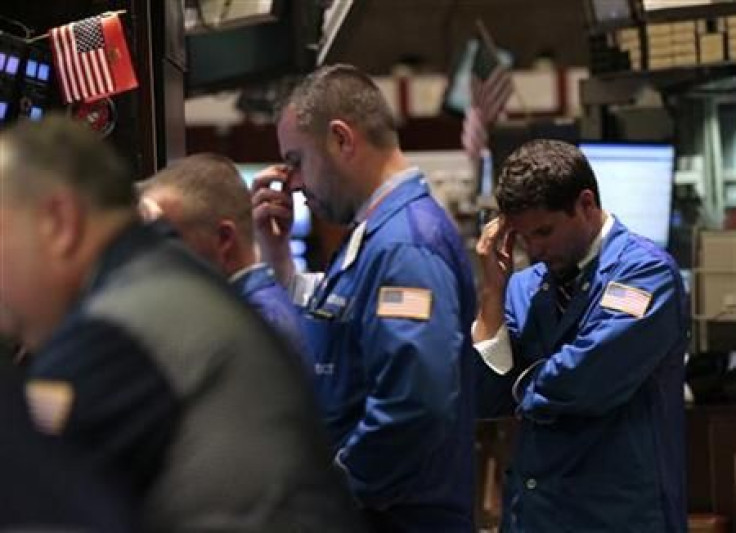S&P 500 Dips to Bear Market Territory: 5 Reasons Why
ANALYSIS

Tuesday’s early morning drop has taken the S&P 500 Index down over 20 percent from its May 2 high. Although there is no official definition of a bear market, one commonly accepted metric is falling 20 percent over an extended period.
At one point in the session, the S&P 500 dropped to 1,074, which is 22 percent below the May 2 intra-day high.
For the session so far, the S&P 500 has dropped 0.63 percent, or 6.97 points, to trade at 1,092.26 at 11:28 a.m. ET. The Dow Jones Industrial Average has declined 1.39 percent, or 148.22 points, or trade at 10,507.08. The NASDAQ Composite is up 0.55 percent.
U.S. stocks rebounded from session lows after Federal Reserve Chairman Ben Bernanke told Congress that the Fed is “prepared to take further action as appropriate to promote a stronger economic recovery.”
Below are five major factors responsible for the declined of U.S. and global stocks.
European Debt Crisis
Greek bonds are threatening to default. Whether the default is planned (the preferred solution) or disorderly, it will be painful.
Many vulnerable and under-capitalized European banks will be rocked by the losses to their Greek debt holdings.
Moreover, other indebted Eurozone members, like Italy, may become the next victim of the ongoing sovereign debt crisis should Greece fall.
At the heart of the problem is Eurozone officials’ inability to act quickly and decisively with either another round of massive bailout cash or Eurozone integration in the form of euro-bonds.
Fed Disappointment
The Fed fell short of market expectations.
Investors hoped the Fed, in its September meeting, would either expand the size of its balance sheet (i.e. quantitative easing) or at least hint at it.
However, the Fed kept the size of its balance sheet constant and only lengthened its maturity (i.e. swap shorter-term assets for longer-term assets).
Washington Gridlock
Washington, gridlocked and polarized, cannot seem to accomplish anything. And it really hasn’t done anything for the economy since Obama’s tax compromise with the Republicans in late 2010.
Investors would welcome either a long-term plan to narrow the budget deficit or a stimulus package in the short-term (or a combination of both).
Sluggish Economy in the Developed World
The combination of deleveraging and unresolved global imbalances has constrained economic growth, apart from government stimulus, in the developed world.
As stimulus ran dry in 2010, the U.S. markets and economy faltered until the government stepped in with more stimulus measures.
In 2011, the same thing is happening, except the government has not so far come to the rescue.
Slowing Growth in the Developing World
In 2010, blistering growth in China and other emerging market economies contributed greatly to the global recovery.
In 2011, however, these economies continued to tighten monetary policy because of surging inflation and cooled down as a result.
Moreover, as China’s stimulus package waned, the developing world, even though it has accumulated a vast hoard of cash savings during the past few decades, has not picked up the slack in demand from the developed world.
As a result, there is a lack of demand globally.
E-mail Hao Li at hao.li@ibtimes.com.
For more useful global markets information, visit ibtimes.com/sections/global-markets.
© Copyright IBTimes 2024. All rights reserved.











